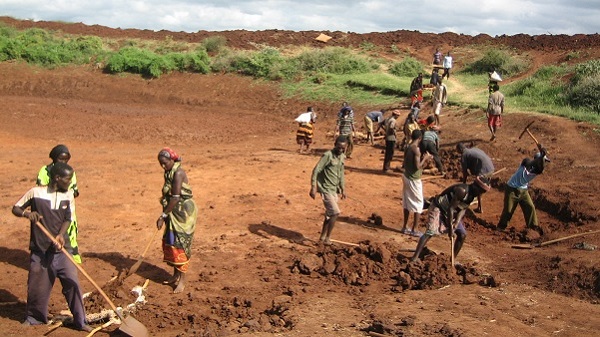
Ethiopia, at the forefront of preventing and reducing drought risks (‘drought mitigation’), offers lessons to prepare for future challenges, writes the Embassy of Ethiopia to the EU.
By Embassy of Ethiopia |
Ethiopia is one of several African states in the Horn of Africa and East Africa suffering from drought, but has more resources and infrastructure to cope than many.
Twenty million people are currently at risk of hunger worldwide. The urgency of the situation, however, overshadows a longer-term challenge: climate change. The effects of climate change are still little perceived in Europe but it already affects the lives of millions of people. Ethiopia, at the forefront of preventing and reducing drought risks, offers lessons to prepare for future challenges.
Over the past few weeks, the media have published an abundance of alarming reports on the risk of famine in Somalia, South Sudan, Yemen and Nigeria. According to the UN, 20 million people are currently on the brink of starvation, making it the worst humanitarian crisis since World War Two. The urgency of the situation, however, tends to obscure a longer-term issue linked to this crisis. The issue of global warming, whose validity some Western governments continue, despite evidence, to question. Global warming is already affecting many developing countries, where the daily struggle to cope with a deregulated climate is constant.
Although the extent of the current famine is the result of a complex combination of factors, including persistent conflicts that led to massive population displacement, violence has only increased the effects of the unusually severe drought that has been hitting Africa since 2015. In the Horn of Africa, two consecutive years of drought, mainly due to the El Niño phenomenon, caused a drop in agricultural yields of up to 80% in some areas. This decimated whole herds due to a lack of water and pastures.
READ: Investing in Resilience Helps Families Find Hope in the Face of Drought in East Africa
Although this humanitarian crisis is reminiscent of other tragedies of this type in this region regularly plagued by cycles of severe drought, the current situation is not ordinary.
Many researchers believe that El Niño is intensifying because of climate change, and the current trend is the strongest ever observed. Ethiopia is also facing its worst drought in over 50 years, leaving nearly 8.2 million people with no certainty about food or water. However, the spectre of starvation remains distant in Ethiopia, a haven spared from famine in a region hard hit by drought. What lessons can be drawn from the Ethiopian experience?
Read the complete story of “Drought Mitigation: Lessons from Ethiopia” at EURACTIV.com
——
See also:
- Saving Lives in El Niño-hit Ethiopia
- NDRMC: The Number of Drought Affected People Reaches 7.6 Million
- Investing in Resilience Helps Families Find Hope in the Face of Drought in East Africa
- Minister James Wharton: UK Will Stand by People of Ethiopia Affected by Severe Drought
- New EU Funding Will Provide Essential Nutrition Treatment for 130,000 Children under the Age of Five in Ethiopia
